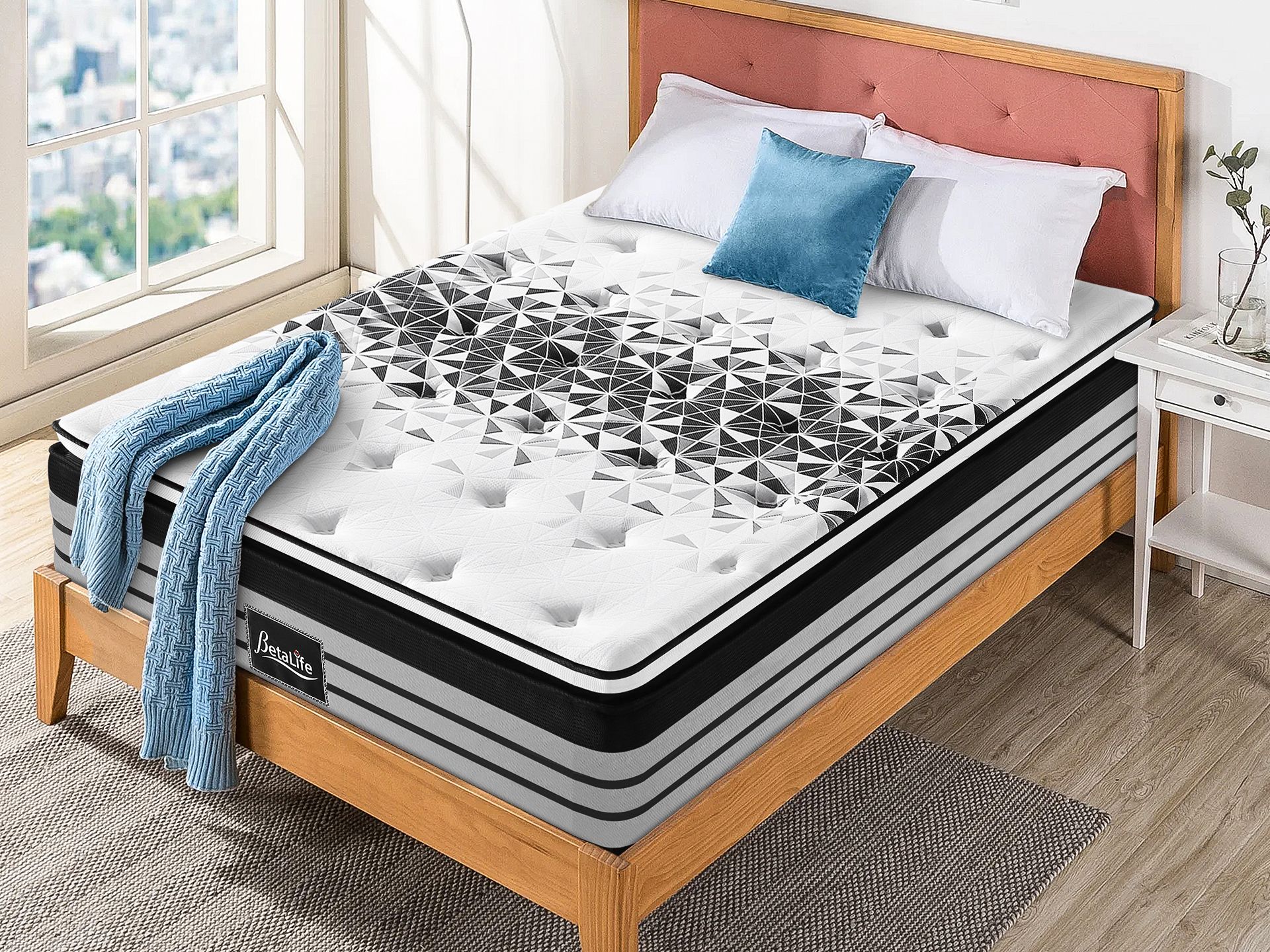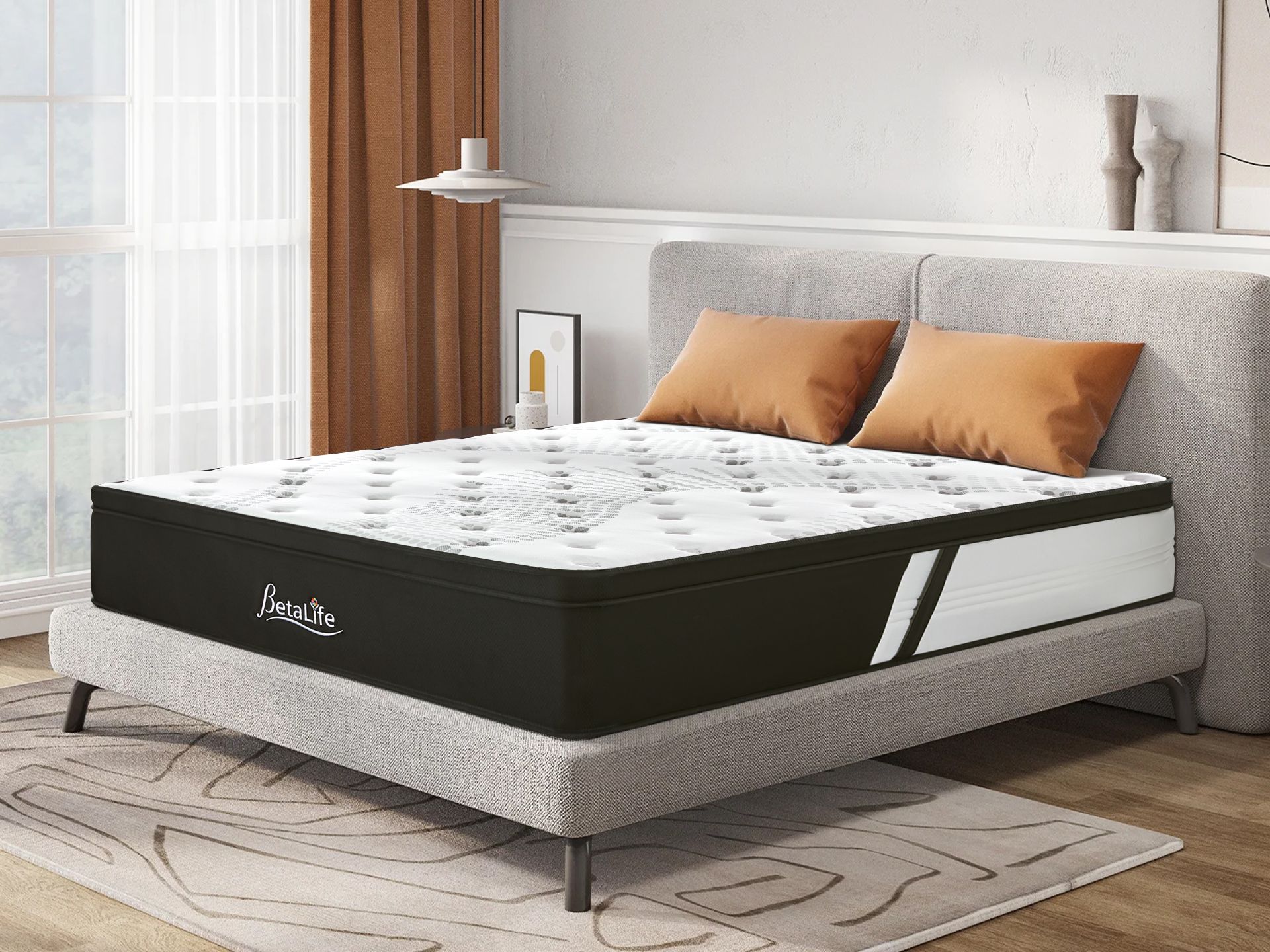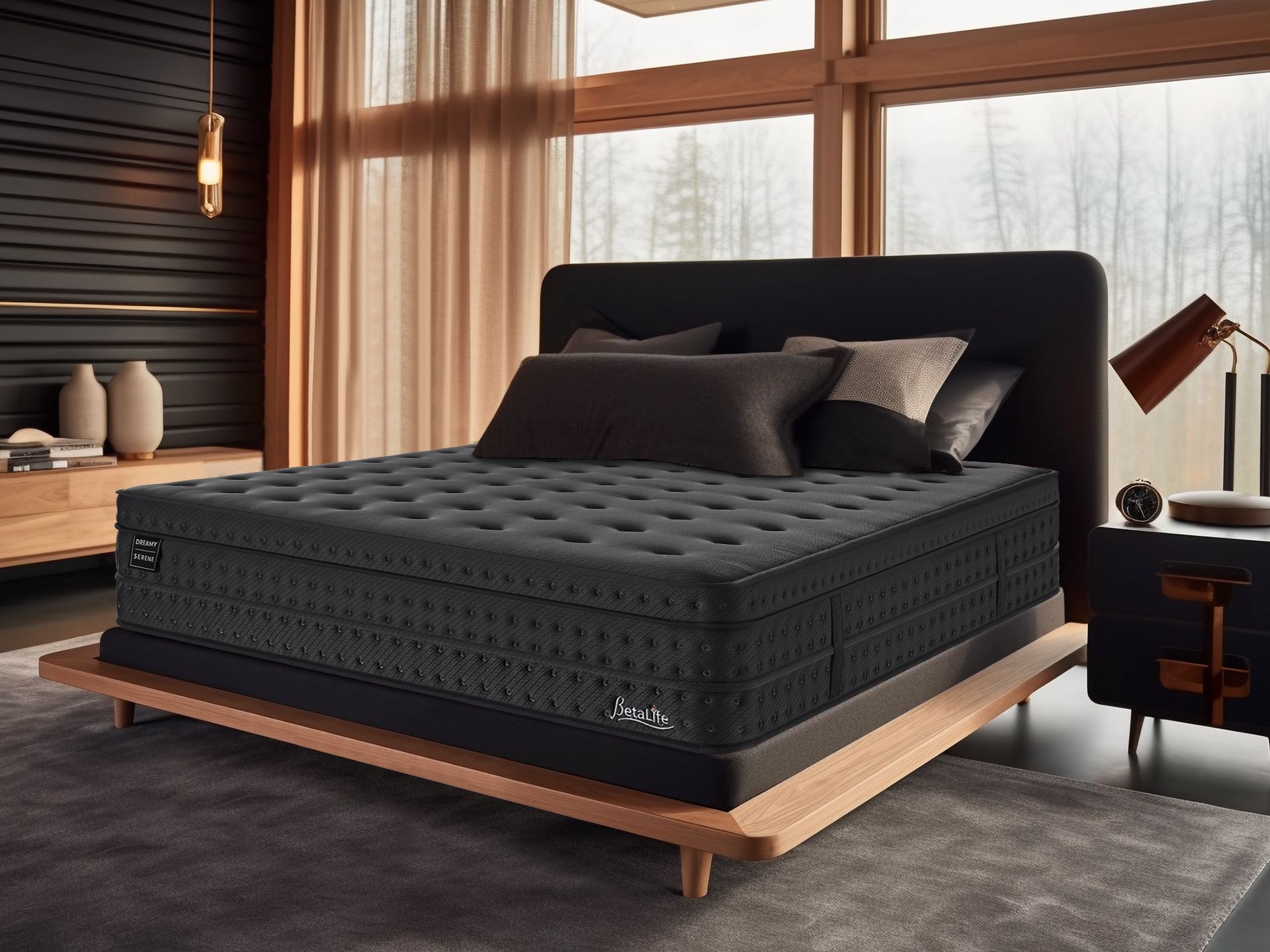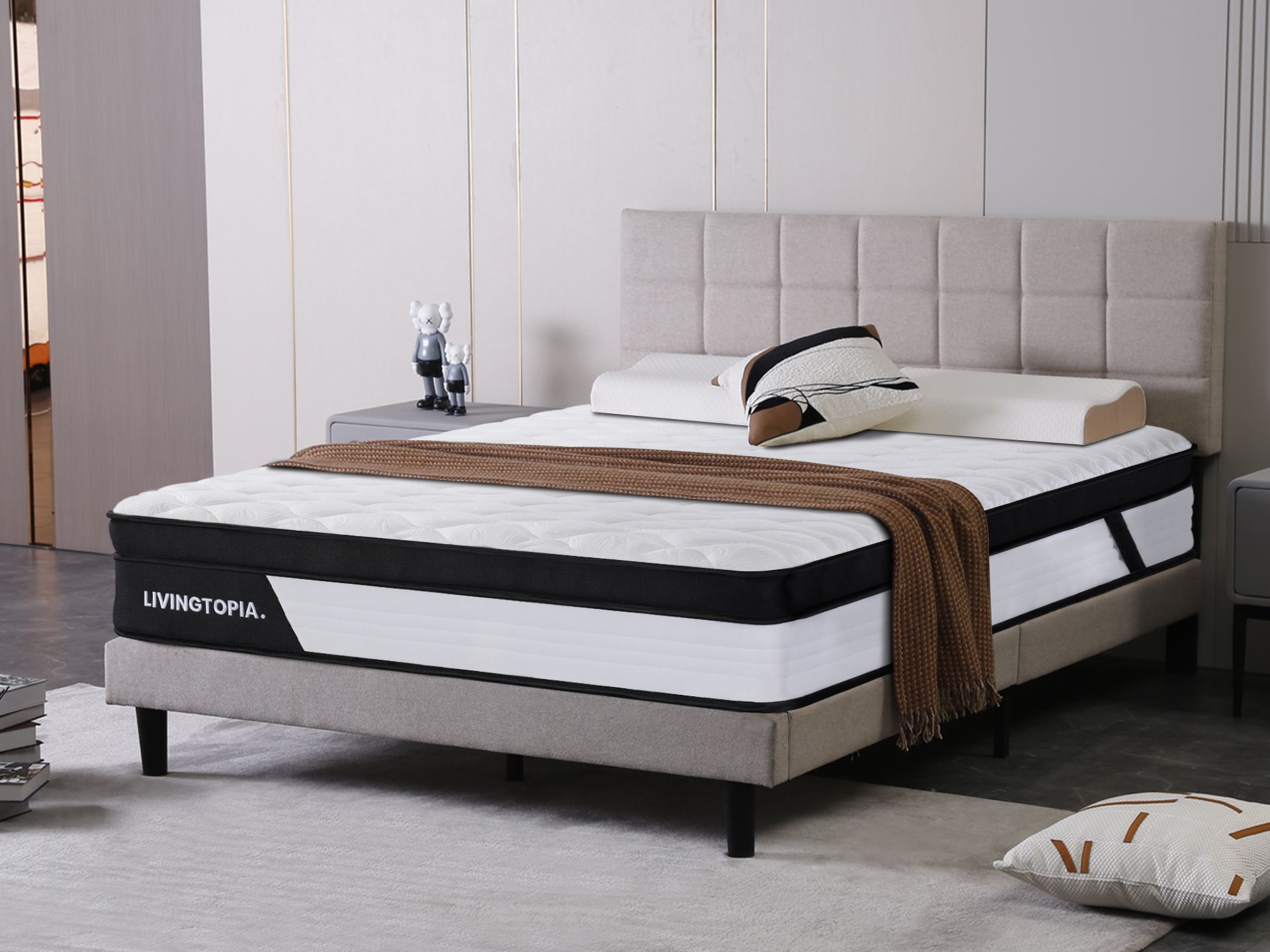The rise of the “mattress in a box” concept has turned the traditional mattress industry upside down. In a world where convenience often trumps quality, this trend has gained massive popularity. But is it truly the best solution for everyone? At TreasureBox, we aim to dig deeper into this phenomenon, revealing both the shiny surface and the cracks beneath. Spoiler alert: not everything that fits in a box is worth sleeping on.
What is the Best Mattress in a Box? Let’s Get Real
The idea of a mattress compressed, rolled up, and delivered to your doorstep sounds almost too good to be true. And for many, it is. The “bed in a box” revolution, championed by brands like Betalife and Livingtopia, has promised high-quality sleep without the hassle of in-store shopping. It’s easy to see why this trend exploded:
- Convenience: No pushy salespeople, no scheduling deliveries.
- Cost-Effective: Many of these mattresses are priced well below their traditional counterparts.
- Compact: Fits in a box, fits in your car, fits in your hallway.
However, let’s not kid ourselves. These mattresses are often sold as one-size-fits-all solutions in a market that thrives on customization. While some consumers swear by them, others find themselves waking up with more back pain than they started with. Compression and shipping can also compromise the structural integrity of the mattress, shortening its lifespan.
In short? The mattress in a box is a trend, not a revolution. It’s a great option for some, but let’s not pretend it’s the ultimate solution for everyone.

How TreasureBox Tests Mattresses in a Box
Before we add a mattress to our product lineup, we don’t just trust manufacturer claims. We test them rigorously. Not once, not twice, but repeatedly, to ensure they meet the needs of our New Zealand customers. Unlike some brands that rush to market, we prefer a slow and methodical approach to quality control.
1. Firmness:
Let’s cut through the marketing fluff—most companies don’t get firmness right. They throw terms like “medium-firm” around, but what does that actually mean? We use a 1 to 10 scale and compare each mattress to hundreds we’ve tested. True medium-firm mattresses should offer support without feeling like concrete.
2. Feel:
Firmness is one thing, but feel is another. Memory foam mattresses, for instance, can feel plush but still offer firm support. We evaluate how each mattress feels when you lie down—whether it cradles you, pushes back, or leaves you feeling like you’re sleeping on a slab of rubber.
3. Durability:
A mattress compressed into a box undergoes a lot of stress during shipping. This can lead to quicker breakdowns over time. We cut some mattresses open after months of use to examine how the materials hold up. Spoiler: some don’t look pretty.
4. Motion Isolation:
No one wants to feel every toss and turn of their partner. We test this by jumping, rolling, and even bouncing a glass of water on one side to see how much motion transfers to the other. Surprisingly, some of the pricier models fail this test.
5. Temperature Control:
Many mattress brands promise “cooling technology,” but do they deliver? Our testers—especially those who sleep hot—provide real-world feedback. We even pull out temperature guns when needed to check if the bed traps heat.
6. Edge Support:
Edge support is a feature that doesn’t always get the attention it deserves. At TreasureBox, we offer mattresses with and without reinforced edges. Whether this feature is necessary comes down to your personal needs and budget:
- With Edge Support: Ideal for co-sleepers or anyone who frequently sits on the edge of the bed. It provides a firmer perimeter that feels sturdy and reliable.
- Without Edge Support: Perfectly fine for many sleepers, especially if budget is a concern. The lack of edge support doesn’t impact how the mattress feels when you’re lying down; it’s primarily noticeable when sitting.
In short, whether or not a mattress has edge support won’t affect your overall sleep quality. It’s more about how you use your mattress during the day.

The Ugly Truth: Pros and Cons of Mattress in a Box
Pros:
- Affordability: Let’s be honest—these mattresses are cheaper than most showroom options.
- Easy Delivery: If you live in a small apartment or have a tiny car, this is a game-changer.
- Trial Periods: Some brands let you sleep on their beds for 100 nights or more before committing.
Cons:
- Longevity Concerns: Compressing a mattress for shipping isn’t great for durability. Don’t expect a $500 boxed mattress to last as long as a $2,000 traditional one.
- Generic Design: Not everyone has the same body type, sleeping position, or health concerns. A one-size-fits-all approach often fails to deliver personalized comfort.
- Overhyped Marketing: Fancy names and buzzwords like “cooling gel” and “adaptive support” don’t always translate to real-world comfort.

Factors to Consider Before Buying a Mattress in a Box
Choosing a mattress isn’t just about picking the trendiest product. It’s about what works for you. Here’s what you need to think about:
1. Sleeping Position:
- Side Sleepers: Look for something soft to medium-soft that relieves pressure on hips and shoulders.
- Back Sleepers: Go for medium-firm mattresses that keep your spine aligned.
- Stomach Sleepers: Firm mattresses prevent your body from sinking too much.
2. Body Type:
- Heavier People (over 230 lbs): A hybrid mattress with coils is almost always better.
- Average Weight: Foam or hybrid both work, but lighter people often find foam firmer than expected.
3. Health Concerns:
- Hot Sleepers: Look for mattresses with real cooling features, not just marketing gimmicks.
- Back Pain: Medium-firm mattresses are the sweet spot for support and pressure relief.
- Joint Pain: Soft, contouring mattresses can help cradle sensitive areas.
4. Budget:
- Budget options exist for as little as $200, but don’t expect them to last.
- Mid-range beds ($700–$1,200) tend to offer the best balance of quality and affordability.
- High-end mattresses ($1,500+) are built to last but aren’t always necessary unless you’re a connoisseur.

FAQs: Mattress in a Box
Are boxed mattresses good quality?
Not always. Some are excellent, while others cut corners to keep costs down. It pays to research and read real reviews.
How long do they last?
On average, 7–8 years. Hybrid models tend to last longer than all-foam options.
Do I need a special bed frame?
Not necessarily, but a solid foundation helps. Check the manufacturer’s guidelines.
What’s the best mattress in a box?
Top contenders include Betalife and Livingtopia, but the best one depends on your personal preferences.

TreasureBox’s Final Take
At TreasureBox, we don’t just follow trends—we challenge them. While we believe the mattress-in-a-box concept has its place, it’s not a universal solution. Some brands over-promise and under-deliver, leaving consumers with beds that sag after a few years or fail to meet their specific needs. That’s why we test every product we sell, ensuring it meets the high standards of New Zealanders.
If you’re looking for convenience without compromising on quality, explore our carefully curated selection. And remember: just because it fits in a box doesn’t mean it’s the perfect fit for you.
Shop Mattress in a box in New Zealand.

